| Reviews & Columns |
|
Reviews DVD TV on DVD Blu-ray 4K UHD International DVDs In Theaters Reviews by Studio Video Games Features Collector Series DVDs Easter Egg Database Interviews DVD Talk Radio Feature Articles Columns Anime Talk DVD Savant Horror DVDs The M.O.D. Squad Art House HD Talk Silent DVD
|
DVD Talk Forum |
|
|
| Resources |
|
DVD Price Search Customer Service #'s RCE Info Links |
|
Columns
|
|
|
3 Silent Classics By Josef Von Sternberg - Criterion Collection
THE MOVIES:
"From now on you are my prisoner of war...and my prisoner of love."
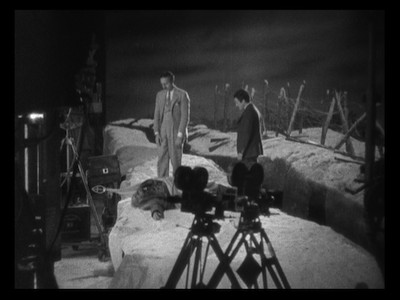
It's interesting to look at Josef von Sternberg's early filmography and see how many films he worked on without credit or was eventually fired from. Having spent some time earlier this year researching one of those projects, I was aware he had gone through some struggles between his scrappy independent debut, The Salvation Hunters, in 1925 and his first studio picture, Underworld, in 1927, but you have to admire the guy for sticking it out. Then again, given how headstrong and defiantly individualistic his films were, I guess I shouldn't be surprised.
The new boxed set from Criterion, 3 Silent Classics by Josef von Sternberg, picks up with Underworld and shows us the director's early development. Though the Austrian immigrant would eventually be best known for his sexy collaborations with Marlene Dietrich, he started off in a much different place, exploring a more realistic world than the exaggerated, opulent, and oft-times grotesque settings that would distinguish The Scarlet Empress or his Gene Tierney-led noir The Shanghai Gesture. Yet, even when the young filmmaker was recreating the mean streets and the back alleys of urban America, von Sternberg still found ways to be von Sternberg. The trio in 3 Silent Classics are rich with memorable images and a confident command of the movie screen, rife with the kind of psychological expressionism that would set von Sternberg apart from the rest. (Be sure to watch Janet Bergrstrom's video essay on Underworld for a succinct and fascinating elaboration on von Sternberg's career prior to this breakthrough.)
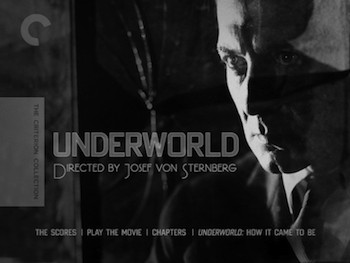
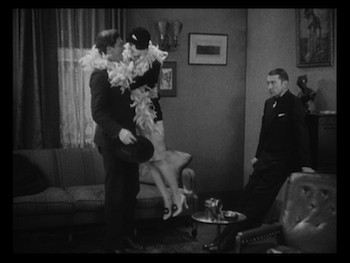
* Underworld (1927): This early gangster picture was built off a story by Ben Hecht, with a little doctoring by Howard Hawks, the guys who would eventually make the genre-defining Scarface. Underworld precedes that film by five years, but it actually plays a little fresher than its more famous descendent. George Bancroft stars as the corpulent crime boss Bull Weed. Just think about that name for a second: he's a deadly, oversized animal whose presence in a healthy area strangles the life right out of it. Underworld opens with Bull robbing a bank by basically blowing it up, setting the stage for his getaway. He's a larger-than-life figure in a larger-than-life city--though ostensibly Chicago, it's also a place called Dreamland. It's a landscape with dark corners, and von Sternberg's use of its unnatural shadows would greatly influence film noir.
For as crazy as all the above sounds, and for how outrageous the film often looks, most of the Underworld plot is fairly conventional. Bull takes a down-on-his-luck, alcoholic lawyer nicknamed Rolls Royce (Clive Brook) under his wing, helping the brainiac get back on his feet. Bull's thanks? Royce falls for his moll, a flapper named Feathers (an alluring Evelyn Brent). Surprisingly, both feel guilty for succumbing to their sexual nature (a theme of von Sternberg's), but then, Bull is a pretty generous guy. He's the prototype of the neighborhood gangster who spreads his ill-gotten gains around. He'll sneak the money out of your pocket with one hand and give it back with the other.
Things come to a head during Underworld's most inventive scenario. The hometown criminals hold a party every year and declare a one-night armistice. They file into a ballroom, checking their coats and guns at the door, and dance the night away. The lead bad guys campaign for their girls and get the others to vote for their favorite to be Queen of the Ball, which sets up Bull's rival, the flower-shop-owner Buck Mulligan (Fred Kohler), to make his move. Bull fights back, gets pinched, and gets in hot water.
This central event is audacious and riveting, like what the consul of criminals from Fritz Lang's M gets up to when they want to have a good time. Ticker-tape is everywhere, booze is flowing, von Sternberg even takes the time to show pranks the hoods play on one another. One montage in particular has the director's fingerprints all over it. As the night wears on, von Sternberg takes us from the point where too much booze has been consumed to the point where the dancing has ended by putting together a series of grotesque close-ups of the guys and gals, showing just their faces as the hooch takes over. They get uglier and more nauseous with each new subject. The movie is pre-Code and so frank with its bad behavior, including some pretty salacious come-ons and visual entendres. It's the perfect subject matter for the director, whose films are always erotically charged and engorged on visual metaphor. Symbols often stand in for character--the actual feathers for Feathers, the flowers for Mulligan.
The acting is all solid in Underworld. von Sternberg keeps the exaggerated gestures under control, knowing what works best for his story. The most over-the-top moments are reserved for Bancroft's laughs, which are hearty and demented. There are some narrative leaps in a jailbreak in the final act, von Sternberg leaving out some of the steps, but given how much we've seen that kind of thing before, you can fill in the gaps, I'm sure. The movie has a sentimental yet effectively existential third act that avoids some of the clichés later gangster movies would run into the ground.
Surprisingly, Paramount thought Underworld was a stinker and limited its release. Ben Hecht apparently even tried to get his name taken off. Lucky for him, he failed. Word of mouth saved the picture, and Hecht won a writing Oscar for his story.
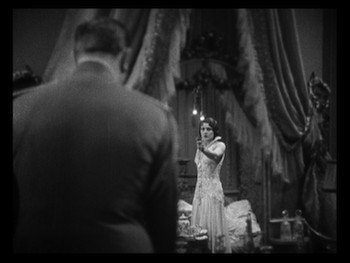
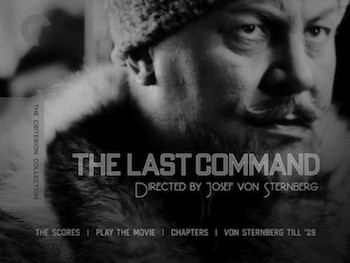
* The Last Command (1928): The great German star Emil Jannings (The Last Laugh, Faust) stars as a former Russian general, Grand Duke Sergius Alexander, who has been exiled to Hollywood following the 1917 Russian Revolution. Sergius has taken to movie acting to make money, and as fate would have it, his first assignment is playing a Tsarist general. Little does he know, he was picked out of a pile of prospective performers by the movie's director (William Powell, The Thin Man) because he is another expatriate, and back home, Sergius locked him in prison. The director wants to see what happened to the man who was so cruel to him.
Cruelty is a running theme throughout The Last Command. The broken soldier is taunted by his fellow actors, who refuse to believe he is who he says he is. The general still carries around a medal the Czar gave him, it's a point of pride for him, and when we flash back to his downfall, we never see him without it. The majority of the movie takes place ten years prior, when Sergius was in charge of the front and the future film director was the head of an acting troupe that was going to perform for the soldiers. Noting that this radical influence has a pretty actress with him, Sergius decides to take advantage. He goads the director into rash action in order to arrest him, and then he takes Natalie (Evelyn Brent again) for his own.
The Last Command is based partially on the life of General Lodijensky, a real Russian leader who fled to Hollywood following the rise of the Communists. von Sternberg takes a sympathetic approach to his portrayal, but it's not one that is necessarily skewed to either side. Rather, the politics and the morality portrayed are complex and often contradictory. Jannings plays Sergius as a tragic figure. He treats citizens with a misguided entitlement, but he cares for his country and his soldiers. Natalie can't help but be attracted to him, she sees he's more than a uniform and fancy medals.
Eventually, the Revolution reaches a fever pitch, and here is where von Sternberg's sense of visual drama really shines. Cutting back and forth between the heads of the army living it up on a train and the gathering of Communists in the streets, von Sternberg eventually unleashes a sea of people in a series of breathtaking scenes where the revolutionaries focus their anger on the general. This sequence combines bombastic filmmaking with imagery straight out of Communist propaganda. Yet, the freedom fighters aren't shown as heroes. When the shoes are on the other feet, they can be just as awful to their fellow man as they believe the rulers were to them.
Jannings is a powerful screen actor, and he and von Sternberg work in concert to give The Last Command the kind of sturm und drang a tragedy of this kind requires. Jannings even picked up an Oscar for his efforts. Evelyn Brent is also really good as Natalie, who has some character changes that are far different and more challenging that the character arc of Feathers in Underworld. The period re-creations look phenomenal, and the climactic scenes of the flashback--which involve a train, a bridge, and a frozen lake--are not just amazing to look at, but they carry a devastating emotional punch.
Also quite neat to look at are von Sternberg's replications of a movie set. We get to see the backstage and the cattle call of extras, and we go out in front of the cameras to see Sergius' ironic fate drawn to a close. It's an effective finish, with the old soldier caught somewhere between the bloated buffoonery of Falstaff and the sad ravings of Lear. I am not sure I quite buy Powell's final lines (as seen on a title card, naturally), the sentiment seems forced--particularly as the closing image of the quiet soundstage works so well to blur the lines between fact and fiction. It's part metafiction, part a cinematic take on the theatrical curtain call.
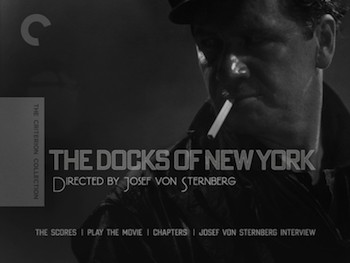
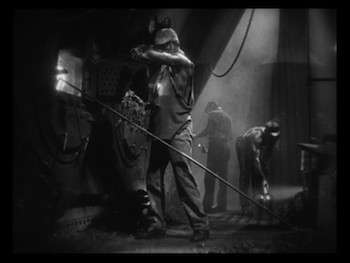
* The Docks of New York (1928): Josef von Sternberg reteamed with his Underworld star George Bancroft for the second of many movies they made together. In this one, Bancroft plays Bill Roberts, a sailor on leave for one night in New York. Bill is a "stoker," one of the guys who works in the belly of the ship shoveling coal into its big burning engine. It's dirty work, and so when Bill goes on land, he's ready to blow off some steam of his own.
Plans go a different way, though, when he happens upon Mae (Betty Compson) flailing about in the water. She means to kill herself, but Bill isn't having it. He takes her to a nearby bar to dry out, and the two end up bonding. They've both seen their fair share of trouble, and there isn't a romantic bone in either of their bodies, but this is a von Sternberg film, so the animal attraction is enough. They spend the night dilly dallying around one another, and even end up dragging a preacher (Gustav von Seyffertitz) in to perform a marriage ceremony.
They also run afoul of trouble. The crew boss (Mitchell Lewis) from Bill's ship is drinking at the same bar, and he's got it in for Bill and wants a piece of Mae himself. His wife (Olga Baclanova) is none too thrilled with it either. There's going to be plenty of drinkin', brawlin', and carousin' before the night is through.
von Sternberg and cinematographer Harold Rosson create a rundown, realistic urban landscape for The Docks of New York. The bar that the couple spend most of their time in looks seedy, and Mae's apartment is falling apart. Scenes down in the bowels of the ship are remarkable documents of the industrial setting. The fire light and the glistening oil make Bill's world both hellacious and majestic. von Sternberg choreographs each scene down to the finest detail. Watch the mirrors in the bar. Just because Mae and Bill are alone in the foreground doesn't mean there isn't something going on in the background. von Sternberg sets it up so we can see the other patrons in the glass behind them, and they react and interact with what is in front of the camera.
Bancroft is excellent again. Bill doesn't have the magnanimity or expressiveness of Bull Weed, but the actor does manage an interior life for him. Much seems to be going on when he looks at Mae. Betty Compson is also very good. She is sexy and has attitude, but she's also weary. That said, the scene stealer is easily Olga Baclanova. She pulls off so much just by the way she stands, hand on hip, hip cocked out. She's getting fed up, and it shows.
Naturally, Bill wakes up the next morning with no real intention of sticking around with Mae, even though she kind of wishes he would. It's the first sentimentality that von Sternberg has allowed to creep into the picture. This is a love affair that is practical, not magical. That makes the little ground the two eventually do give to each other all the more meaningful. It took a lot for them to take those baby steps.
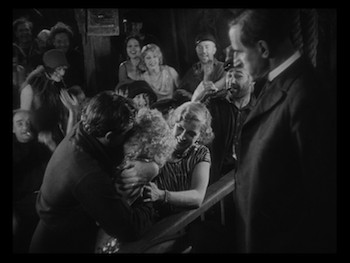
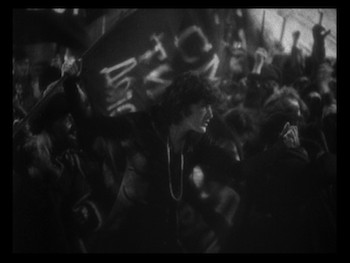
(left to right: Docks of New York, Last Command)
THE DVD
Video:
The trio of films in 3 Silent Classics by Josef von Sternberg are all full frame, black-and-white. Though far from spotless, the restoration done to these prints is still absolutely wonderful. All the prints have some scratching on them, though only The Last Command is persistent; the other two, the damage is intermittent. The images are clear, the photography has great balance between light and dark, and the resolution is fantastic. An extended round of applause would be well deserved. When you take into account how a couple of the films discussed in the extras are considered permanently lost, the fact that we have a way to preserve and watch this trio over and over is in itself a champion achievement.
Sound:
All three movies have two different musical scores to choose from. The one constant is Robert Israel, who provides a track for each. His music is dramatic, putting a full orchestra to use to achieve the full range of operatic emotions, as befitting von Sternberg's production. He also inserts some nice synchronized effects, such as ringing telephones and gunshots. (Interesting side note: his work on The Last Command is dedicated to Terry Gilliam.) On the other hand, the Alloy Orchestra, who provide pieces for both Underworld and The Last Command, despite using classical instruments, have a more modern sound, with synced melodies and a little bit of atonality. I quite liked their use of the accordion in The Last Command, it added a more authentic flavor to a lot of the scenes, such as the party on the train (which is then followed by a melancholy down-swell). On the other hand, I was not as fond of some of their percussive arrangements.
Donald Sosin provides the second score for The Docks of New York. His piano-driven music is fine, I suppose, but I didn't really care for the songs with vocals performed by Joanna Seaton. They were distracting and didn't fit the mood of the piece. I think in all cases, Robert Israel is really the way to go.
The title cards look great. If they've been re-created in any way, they don't look it, they have a vintage appearance.
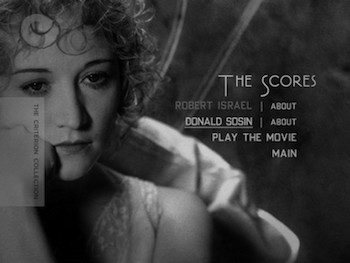

Extras:
3 Silent Classics by Josef von Sternberg is handsomely packaged. The three movies each come in their own cardboard book, which fit inside a sturdy box alongside the thick collection of essays that go along with them. In addition to the standard critical essays for each movie, the 96-page book also has information about the scores, Ben Hecht's original (and quite different) story for Underworld, and a selection from von Sternberg's autobiography in which he writes about Emil Jannings. There are also cast and crew credits and photos. Chapter listings are on the inside front covers of the holder for each movie.
Two of the movies have new video essays that use photos, artwork, and clips to dig deeper into the productions. As mentioned above, UCLA's Janet Bergstrom has put together a 36-minute program on Underworld that begins with the long road to getting this opportunity and how von Sternberg took advantage of it. In addition to press photos and clips from the film, we also see poster art and some amazing production drawings. Bergstrom also shares clips from The Salvation Hunters and stills from the various troubled von Sternberg productions that followed it.
Tag Gallagher provides the second video essay, this time on the disc for The Last Command. Gallagher's video pieces are always really good, and this is no exception. His premise here is that von Sternberg had already developed most of his trademark style prior to his adopting sound in the next year and before even working with his regular co-conspirator, Marlene Dietrich. This 35-minute piece covers some of the same biographical ground as Bergstrom's, but its full focus encompasses all three movies in the boxed set. Scenes from von Stroheim's Greed used to show influences on von Sternberg's editing remind us how criminal it is that Greed is not yet on DVD.
DVD 3, The Docks of New York, has a 40-minute interview with von Sternberg recorded for Swedish television in 1968. He spends an extensive amount of time talking about his silent films.
FINAL THOUGHTS:
3 Silent Classics by Josef von Sternberg is one of my favorite boxed sets to come along this year. All the films are both engrossing to watch and to look at. von Sternberg had an individualistic personality, and his vision shows in every frame. From the gangster chic of Underworld to the period war drama The Last Command and through the stark melodrama of The Docks of New York, he was developing his craft and establishing a style that was all his own. DVD Talk Collector Series.
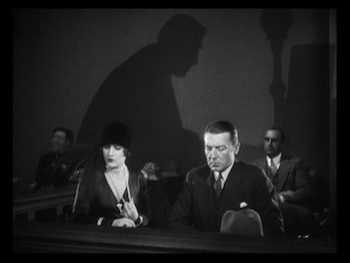
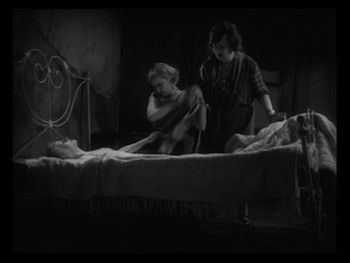
(Underworld, Docks of New York)
Jamie S. Rich is a novelist and comic book writer. He is best known for his collaborations with Joelle Jones, including the hardboiled crime comic book You Have Killed Me, the challenging romance 12 Reasons Why I Love Her, and the 2007 prose novel Have You Seen the Horizon Lately?, for which Jones did the cover. All three were published by Oni Press. His most recent projects include the futuristic romance A Boy and a Girl with Natalie Nourigat; Archer Coe and the Thousand Natural Shocks, a loopy crime tale drawn by Dan Christensen; and the horror miniseries Madame Frankenstein, a collaboration with Megan Levens. Follow Rich's blog at Confessions123.com.
|
| Popular Reviews |
| Sponsored Links |
|
|
| Sponsored Links |
|
|
| Release List | Reviews | Shop | Newsletter | Forum | DVD Giveaways | Blu-Ray | Advertise |
|
Copyright 2024 DVDTalk.com All Rights Reserved. Legal Info, Privacy Policy, Terms of Use,
Manage Preferences,
Your Privacy Choices | |||||||













